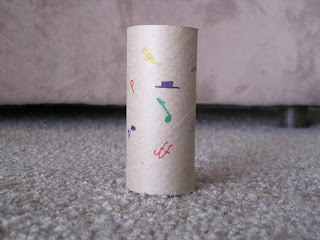
Spring Semester of Kindermusik begins the week of January 3rd!
Our Time (18 months to 3 years)
Mondays 9:30-10:15, and 4:00-4:45
Musical Focus: Learn to identify sounds as high or low, fast or slow, loud or quiet. Be able to feel a steady beat, experience a wide variety of music and movement genres, and exposure to musical vocabulary words.
Life Skills Learning: Active listening, large muscle and fine motor skill development, balance and stability, vocal expressiveness, pretend play, social competency, cooperative games, ensemble play, turn taking, creativity.
Imagine That (ages 3 to 5)
Thursday 9:15-10:10, parents are invited to join us for the last 10 minutes of class.
Please have your child bring his drum and play set to class every week. He’ll be getting his play set the first week of class and getting new pieces each week. I’ll be giving each child a bag they can keep the play set in.
Musical Focus: Learn to identify different timbre in music, develop a musical vocabulary, and gain confidence in singing. Accurately echo singing, chanting, and patting of rhythmic phrases. Learn to move to and play a steady beat. Identify, sign, and sing the so-mi-la, interval. Lay a foundation for more advanced music study.
Life Skills Learning: Explore and understand the world through pretend play, pre-literacy and vocabulary development , continued large muscle and fine motor skill development, social competency skills, ensemble play and turn-taking, active listening, memory and attention development. Engage in constructive learning; learning that allows children to reflect, compare, make choices, express opinions, communicate preferences, and problem solve.
Village (birth to 18-months)
Wednesday 11:30-12:15
Musical Focus: Experience a steady beat, exposure to a wide genre of music, exploration of sound and rhythm instruments, enjoy engaging in musical play.
Life skills Learning: Vestibular stimulation, this is the first sense to fully develop and allows the infant to interpret and integrate sensations from the other senses. Develop visual-spatial skills, tactile perception, language, active listening, and relaxation skills. Build self-awareness and social skills, bonding between parent and child. Limited exposure to ASL.
All classes will be taught at the beautiful Sweetwater Bay Montessori Home Preschool, located at 936 N. Sweetwater Bay, Gilbert AZ. Please contact Miss Mindy to get the gate code. The preschool is located in the Val Vista Lakes subdivision. Here is the map link:
http://maps.google.com/maps?f=q&source=s_q&hl=en&geocode=&q=936+N.+Sweetwater+Bay,+Gilbert+AZ&sll=37.0625,-95.677068&sspn=36.915634,56.513672&num=10&ie=UTF8&hq=&hnear=936+N+Sweetwater+Bay+Dr,+Gilbert,+Maricopa,+Arizona+85234&ll=33.367273,-111.754882&spn=0.009516,0.013797&z=16
To maximize you and your child’s learning experience and eliminate distractions please make sure your child is fed before coming to class, and has recently taken care of their potty or diaper needs. Occasionally we will be using food to enhance learning in class. If your child has any food allergies or restrictions please let me know.
I’ll be doing weekly posts to my Kindermusik blog (kindermusikwithmindy.blogspot.com). I’ll post pictures and explanations of what we’re doing in class to enhance your child’s development. You’ll want to check the blog regularly!









